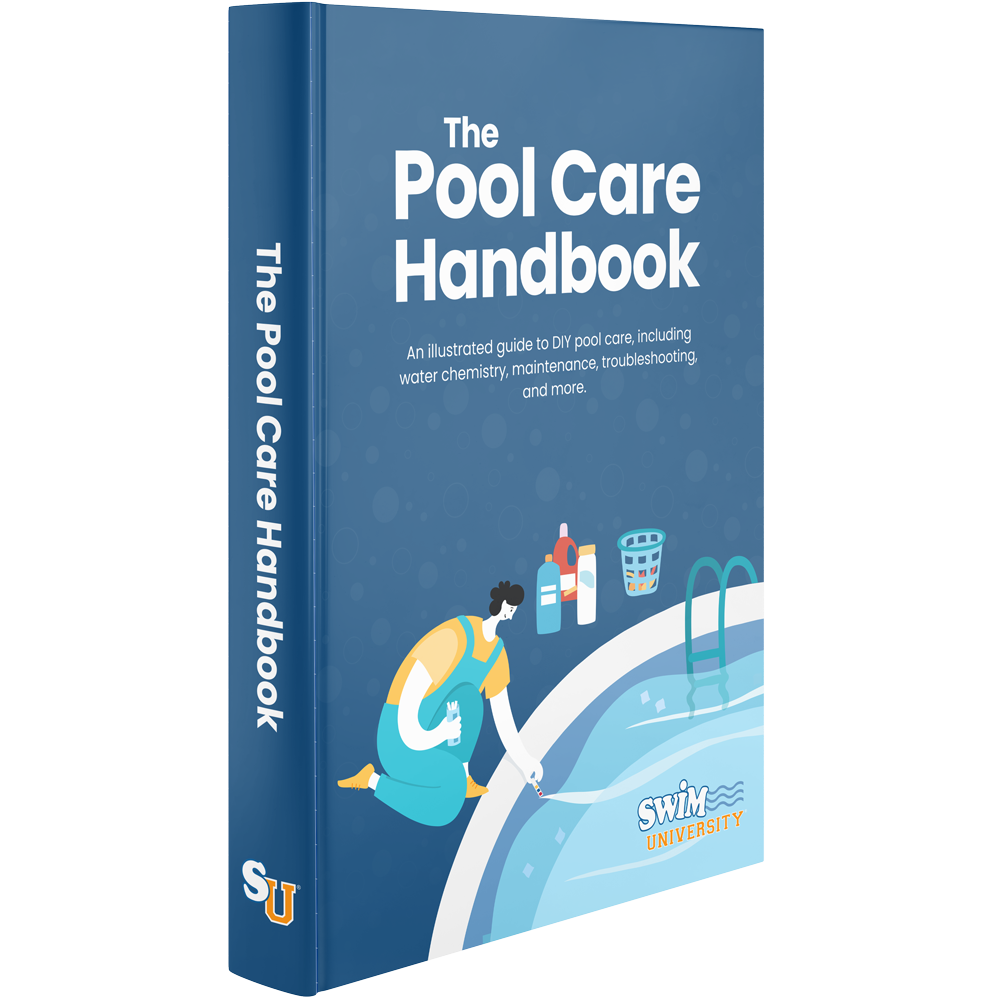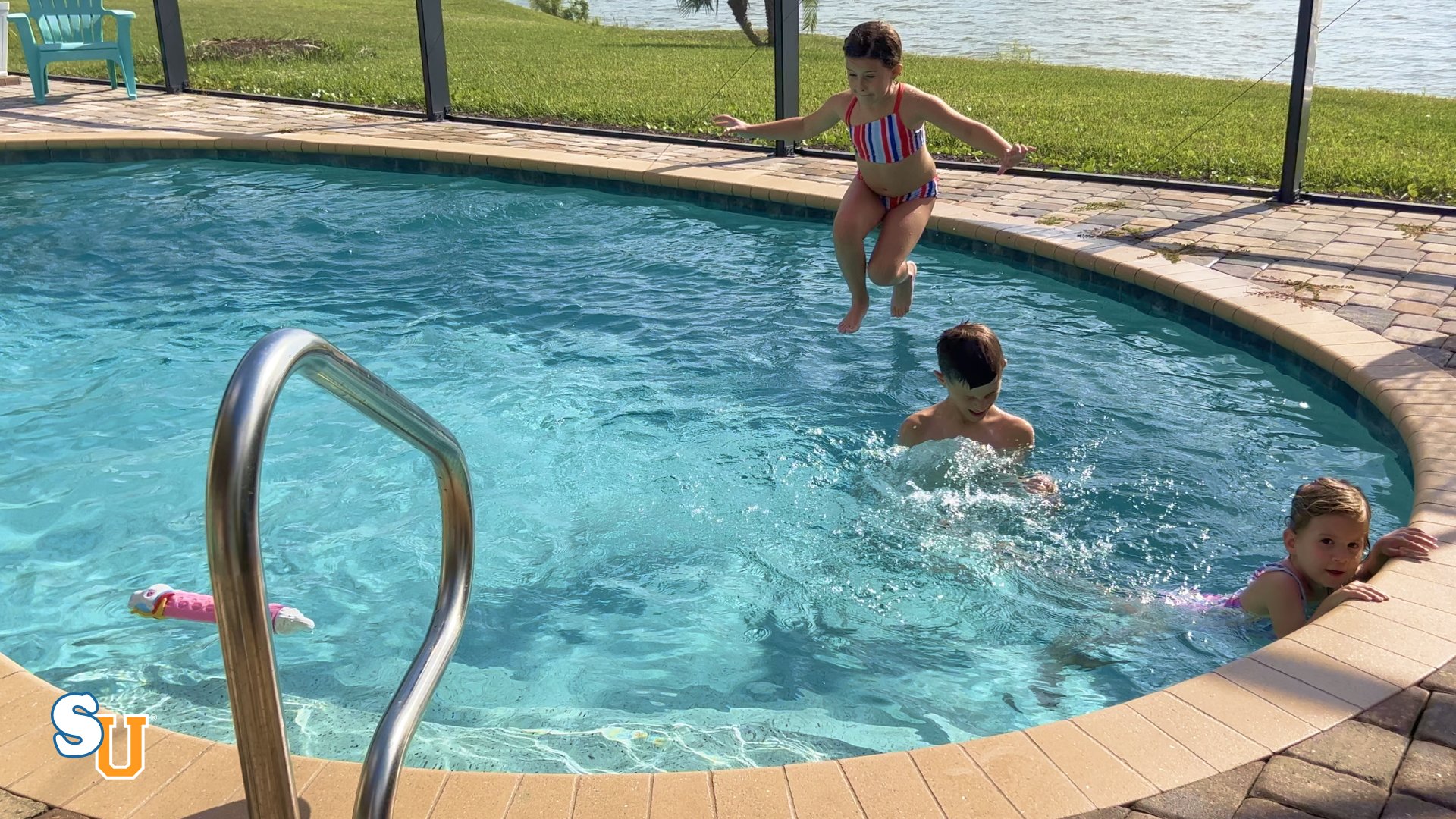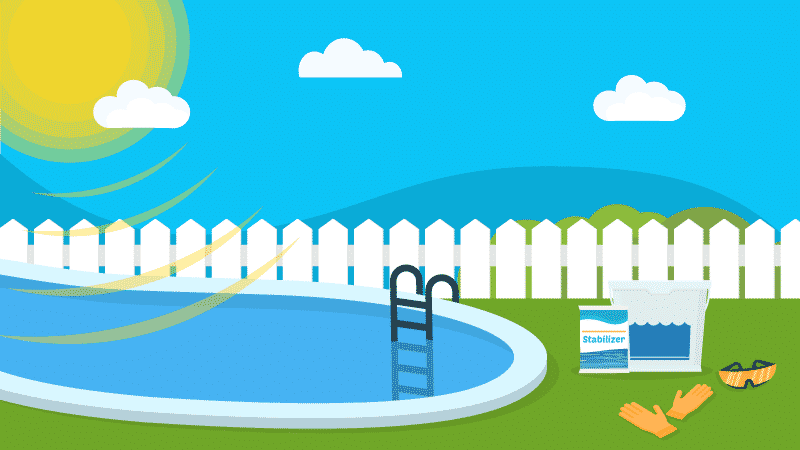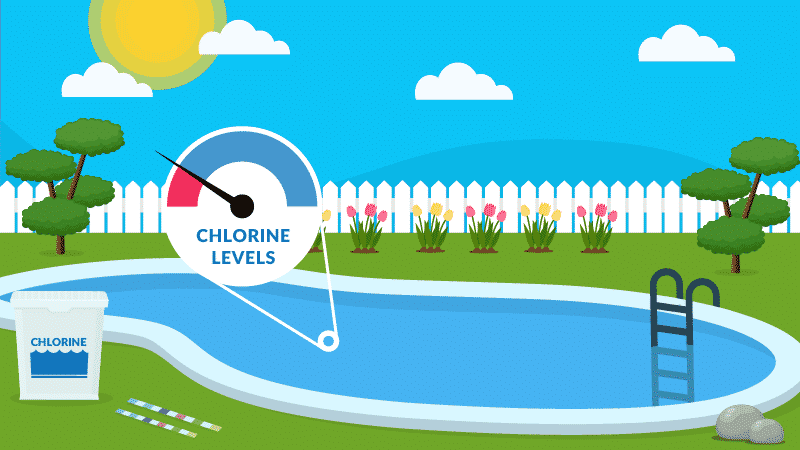6 Ways to Protect Your Pool In Hot Temps and Heat Waves
When it’s hot outside, your pool needs extra help to stay sanitized. High temperatures and prolonged sun exposure can cause algae blooms, evaporation, and rapid changes in your water chemistry. But there are a few things you can do to keep things balanced. So here are 6 ways to protect your pool water in hot weather. Let’s dive in.
Stop wasting time and money with confusing water chemistry and maintenance. Our effortless system guarantees to keep your pool balanced, sanitized, and crystal clear all year. Works for all pools including saltwater.
1. Test Your Pool Water 2-3 Times a Week
Testing once a week is usually enough. But when the weather gets really hot, your water chemistry can fluctuate quickly. So test your pool water twice or even three times a week so you’ll know when your levels start to get out of range.
Chlorine is the most affected by heat and sunlight. That’s because it breaks down in direct UV rays. So pay extra attention to dips in chlorine. And if you’re using the pool more often – because, well, it’s hot outside – then keep in mind that extra swim time can impact your water chemistry, too.
This digital pool and hot tub water test kit checks for Free Chlorine, Total Chlorine, Bromine, PH, Alkalinity, Calcium Hardness, and Cyanuric Acid.
2. Boost Your Chlorine
As temperatures rise, algae start to grow. And as algae grow, your chlorine gets used up more. Add that to the fact that your chlorine is breaking down more quickly in the sun, and you’ll likely see dips in your chlorine levels when it’s extra hot outside.
Your free chlorine levels should be between 1 and 3 PPM, with 3 PPM being ideal. Obviously, keep on top of your regular chlorine dosing. But consider shocking your pool once a week to help keep your chlorine active and working in the water.
If your Free Chlorine levels drop too low, shock your water with a chlorine-based shock, like cal-hypo shock, dichlor shock, or liquid chlorine. This will help boost your free chlorine levels and kill any contaminants or algae in the water.
If your Free Chlorine levels are fine, use a non-chlorine shock, a.k.a. oxidizer. This will break down any “used up” chlorine in your pool. Oxidizer is also good to use if you notice your Total Chlorine levels are high or there’s a strong chlorine smell in the water.
A powerful oxidizing agent that eliminates combined non-sanitizing chlorine (chloramines) and provides higher free chlorine levels. Helps eliminate algae growth as well as harmful bacteria. Ideal for use with chlorine or bromine sanitized applications, weekly maintenance, and will not affect other chemical levels
Shock can also be helpful for saltwater pools when it’s hot out. Manually boosting your chlorine helps prevent your saltwater generator from overworking. Use an oxidizer, liquid chlorine, or dichlor shock. Just keep in mind that dichlor shock contains CYA.
Finally, if you do start to notice algae, you’ll want to add a double or triple dose of chlorine shock to the water to kill it. If you need more help, check out our other video about killing algae.
3. Keep Your CYA Levels Up
Cyanuric Acid, a.k.a. CYA or Stabilizer, helps protect your chlorine from breaking down in direct sunlight. That means chlorine breaks down more quickly when it’s sunnier and hotter outside.
Your CYA should be between 30 and 50 PPM. Chlorine tablets or dichlor chlorine granules already contain CYA.
But if you’re using chlorine that doesn’t contain CYA, consider supplementing your water with a stabilizer.
Keep your chlorine from being burned off too quickly by the sun's UV rays. CYA will help you keep a better chlorine reading in your pool.
You want to add enough to bring your CYA levels into range. Just don’t overdo it, since the only way to bring down high CYA is by partially draining and refilling your pool. The magic ratio between CYA and Chlorine is 7.5%. So if your CYA is 40 PPM, your chlorine should be 3 PPM.
Cyanuric Acid is especially important for saltwater pools. Your salt water generator ends up working more to maintain your chlorine levels during high sunlight exposure. And there’s naturally no CYA in a saltwater pool. So keeping your CYA levels up matters a lot. Many saltwater pool owners find that keeping their CYA a bit higher, between 60 and 80 PPM, helps prevent your saltwater generator from working so hard, especially when there’s lots of chlorine loss.
This is the ultimate guide to keeping your pool sparkling clean throughout the year that contains everything you need to know about taking care of your pool the right way.
4. Remove Algae Spores
Algae love hot weather, so be sure you’re staying on top of your pool cleaning routine. In fact, you might want to clean your surfaces a bit more often in high heat. Brush your pool walls and floor more than once a week, and vacuum your pool more often to help remove algae spores.
This is where a robotic pool cleaner really comes in handy – and consider running it more often when it’s extra hot outside. Check out our other video on robotic pool cleaners if you want more information.
5. Increase Your Pump’s Run Time
This is another way to help prevent algae. When water is moving, algae has a harder time clinging to the surfaces and growing in your pool. Running your pump also helps circulate your chemicals and filter out contaminants and debris.
If you normally run your pump 8 hours a day, consider adding an extra hour or two when it’s extra hot. If it’s over 100º Fahrenheit (or 37º Celsius), you’ll want to run it even more often than that. Finally, if you have a variable-speed pump, consider running it 24/7 at a low speed during the hottest times of the year.
6. Use a Solar Cover to Prevent Pool Water From Evaporating
Your pool can lose up to a half inch of water each day just from evaporation. And as your water evaporates, the chemicals evaporate with it. That’s where solar pool covers come in handy. They can help reduce evaporation by up to 95%. So keep your pool covered when it’s not in use. And consider covering it at night as well. If you have cooler nights with lower humidity, the temperature difference between your pool and the surrounding air can accelerate overnight evaporation.
Before using a solar cover, be sure you’ve followed all of the other steps. You don’t want to accidentally create an incubator for algae.
3 Ways We Can Help With Your Pool
- Pool Care Cheat Sheets (Free): Easy-to-use downloadable guides to help you keep track of taking care of your pool this year.
- The Pool Care Handbook: An illustrated guide to DIY pool care, including water chemistry, maintenance, troubleshooting, and more.
- The Pool Care Video Course: You’ll get 30+ step-by-step videos and a downloadable guide with everything you need to know about pool maintenance.













